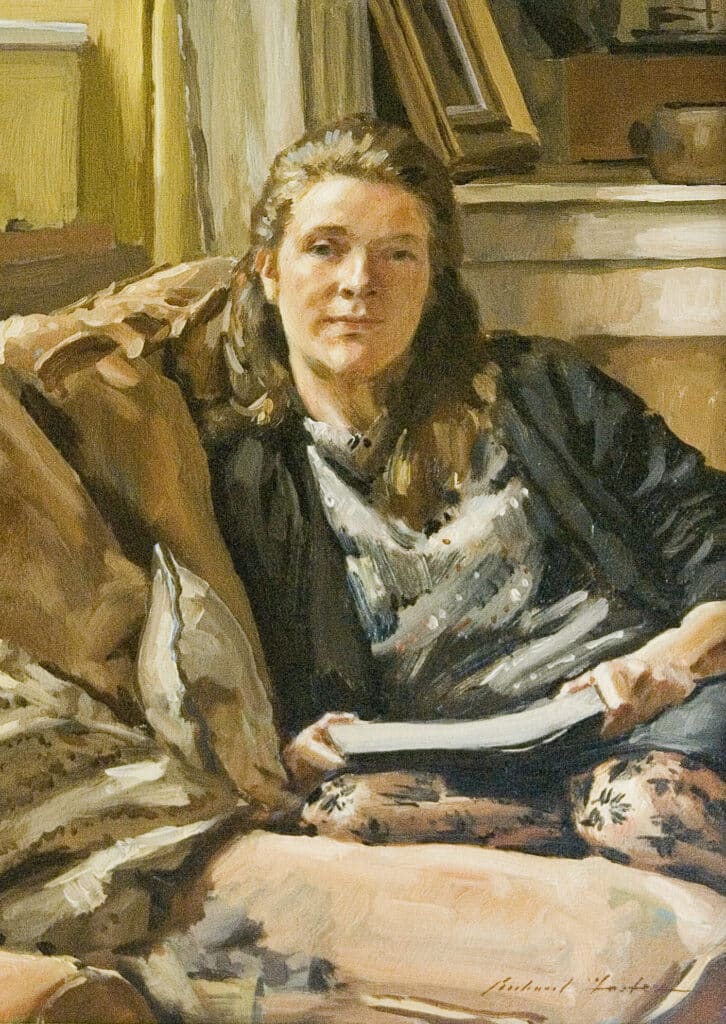The College Collections hold an item described as a “Half-length portrait of a young woman, seated on a sofa and holding a book.” Despite having a young woman as the subject, it is an authentic Eton leaving portrait. The sitter, Emily Bourne, is the daughter of R.M.A. Bourne, Assistant Master from 1947-1983, house master 1959-1979, “one of a few girls who attended the school in the 1980s,” according to the Collections description of the portrait.

In fact, several cohorts of girls attended Eton in the 1980s to prepare for the Oxford and Cambridge entrance exams and lived at their nearby girls’ schools, coming to Eton for lessons. But Emily, as a Master’s daughter, was able to live at the school and attend Eton for her entire sixth form, which was permitted in the ’70s and ’80s but is no longer a privilege allowed to Eton daughters. She won the Oppidan Scholarship and Head Master’s Prize and was a member of Sixth Form Select, probably the first and only young woman ever to achieve these accolades at Eton. Her time at Eton was marked by a portrait because there was a tradition that one member of Sixth Form Select was painted every year, and in 1982, she was selected. Bourne’s leaving portrait currently hangs in one of the departmental offices.
If Eton College were to go co-ed, the press would herald the admission of girls as a historic event. After six centuries of exclusively teaching and developing boys, Eton would now open its doors to young women, allowing them to participate fully in the life of the school. But girls have been here for centuries. We need to make a greater attempt to uncover new sources that show diverse experiences of Eton, beyond those of boys, masters, and senior staff. In looking at the school through the eyes of girls who spend their childhoods here, we start to appreciate that these young women have had their own experience of the school—their own Eton, which is worth noticing and preserving.
Merritt F (JCAJ)



